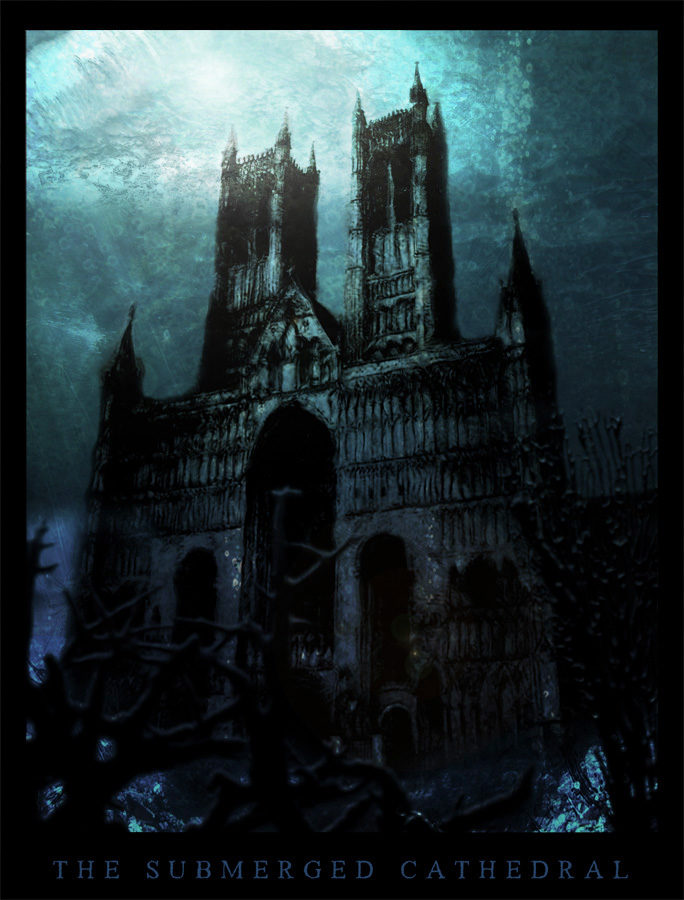The Maestro’s Corner: Bells Under the Ocean
Debussy’s “La Cathédrale Engloutie”
"The Submerged Cathedral" by Claude Debussy. Played by François-Joël Thiollier.
October 23, 2017
Achille-Claude Debussy may be the most famous impressionist composer of all time. His works, from light piano preludes like Clair de Lune to full operas such as Pelléas et Mélisande, are the definition of European impressionism.
Debussy’s music, was part of the wave of impressionism that swelled across the 19th and early 20th centuries, conveyed in writing, painting, and music simultaneously. During this period, the focus in art shifted from conveying detailed images of the subject to conveying the emotions and moods elicited by the subject. Instead of showing you an idea, impressionists would make you feel the idea.
This is what makes listening to Debussy such a unique experience; his music creates totally different responses in different listeners. Debussy’s music is also doubly special in that it does not just convey an emotion, it tells a story – by listening, you can follow the musical tale from its introduction, twists, and modulations, to its close. He uses certain combinations of symbolic harmonies to carry out the story without ever needing words.
La Cathédrale Engloutie (The Submerged Cathedral) is one of Debussy’s most celebrated piano works, for this precise reason. Debussy was inspired to write this piece by the tale of the City of Ys. According to Breton myth, Ys was a magical city built on land reclaimed from the sea; the water was held out with a great dike. This city glittered with beauty and luxury, but it fell beneath the waters at the hand of its evil princess, Dahut. Legend states that, on clear days, the city’s cathedral rises up from the depths, and the sound of bells ringing, priests singing, and the great organ playing can be heard across the still waters.
Published in 1910, The Submerged Cathedral is characteristic of Debussy in all its facets. It begins with a supremely quiet sequence of parallel open fifths (0:00), with resonant notes in the extreme bass and treble ranges. It is, in fact, the range of this piece that makes it so stunning. This opening sequence sounds incredibly akin to the ringing of cathedral bells echoing from beneath the sea; you can hear both the large, deep bells and the smaller, silvery ones. In this sequence, Debussy employs a pentatonic scale, one of his signature marks as a composer; in this context it also reminds us of the solemn Gregorian chants once sung by medieval monks. As the chords begin to swell at 1:18, you can feel the waves of the sea parting as the cathedral rises from the deep. Listen closely as water pours from the bell towers and falls down the stone face of the cathedral; colorful stained-glass windows glitter in the sun. The piece climaxes at 2:11, as the cathedral ascends to its full height and towers over the waves. Masterful blending of resounding chords elicits a powerful impression of a pipe organ and bells playing simultaneously. Now, the cathedral begins to sink back into the water. The organ fades away (3:00) the waves close over the tiled roof (4:09) and only the bells can be heard beneath the calming water(4:36). Look deep beneath the waves, and maybe you will be able to see it – a distant glitter in the dark water. Quieter, quieter, and the bells cease ringing.
This is a surreal piece. Each time you listen to it, something new emerges: a new image, emotion, or association. It’s easy to get lost in music like Debussy’s because it resonates so deeply with the subconscious. Debussy uses atonal, dissonant chords and exotic, pentatonic scales, but makes them sound full and rich because of the way he sequences them, allowing them to lift off into submelodic, almost-hummable phrases. Because of this, the piece is both heavy and weightless at the same time.
The Submerged Cathedral is infused with magic, mystery, beauty and grandeur. No other impressionist composer, save perhaps Ravel or Satie, rivals Debussy’s ability to infuse these emotions into wordless music. Thus, The Submerged Cathedral is a journey not only into the watery depths of the mythical cathedral, it is also a journey to the height of Debussy’s genius.



